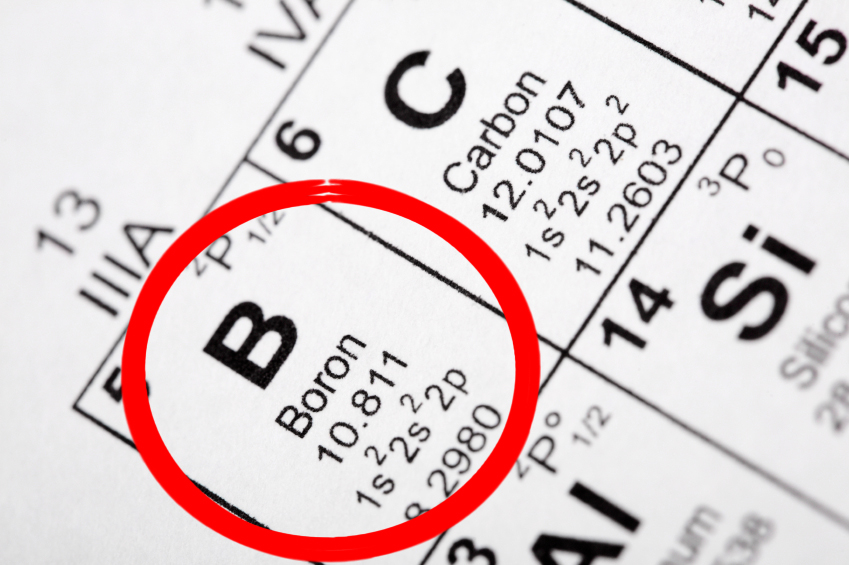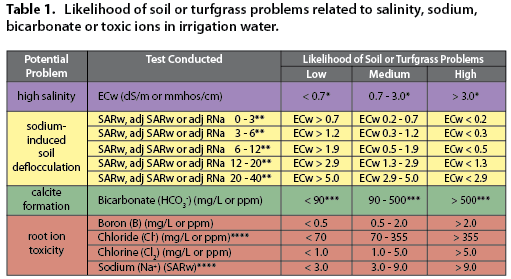In previous Blog posts, we stressed the importance of testing your irrigation water when it comes to assessing two common turfgrass problems: high salinity levels and too much sodium present in irrigation water.
Today we’re going to look at another common problem for turfgrass managers: root ion toxicity. So how can you tell if your irrigation water contains enough boron (B) or chlorine (Cl2) to worry about boron or chlorine toxicity?
First, identify the boron values on your irrigation water quality report and compare to the boron value ranges in Table 1 (below) to determine the likelihood of boron causing root toxicity. Chlorine levels are not commonly reported on irrigation water quality reports. If you are using recycled water, obtain chlorine levels from your water supplier and compare to chlorine levels in table 1.
Next, locate the boron concentration on your soil test report. Boron levels as low as two to four ppm can be toxic to some turfgrass species. Chlorine concentrations in the soil are usually not reported on soil tests because chlorine is a gas and doesn’t persist long in the soil. You can avoid chlorine toxicity in the soil by using irrigation water low in chlorine (again, refer to the numbers in Table 1).
Managing Ion Toxicity
If boron or chlorine levels are high enough to cause an issue with turfgrass growth, you’ll have to take certain steps to manage the problem:
- Avoid using irrigation water containing more than one to two ppm boron (B) or five ppm or more chlorine (Cl2) on turfgrass if possible.
- Blend irrigation water with another water source that contains less boron or chlorine.
- If it becomes necessary to leach your soils, use an Aquatrols soil surfactant to improve the uniformity and effectiveness of toxic ion leaching.
You can learn more by downloading our FREE guide to assessing and managing turfgrass salinity issues in irrigation water and soils. Love talking turf? Be sure to Like us on Facebook and Follow us on Twitter!




[…] Over the past few days and weeks, we’ve been discussing the basics of soil and water quality. We touched on the importance of testing your irrigation water as well as common problems related to soil salinity, high levels of sodium in irrigation water and soils, and the potential damage caused by the presence of toxic ions. […]
[…] salinity, high sodium, and potential ion toxicity from irrigation water are problems that are all commonly agreed upon by turfgrass managers and […]